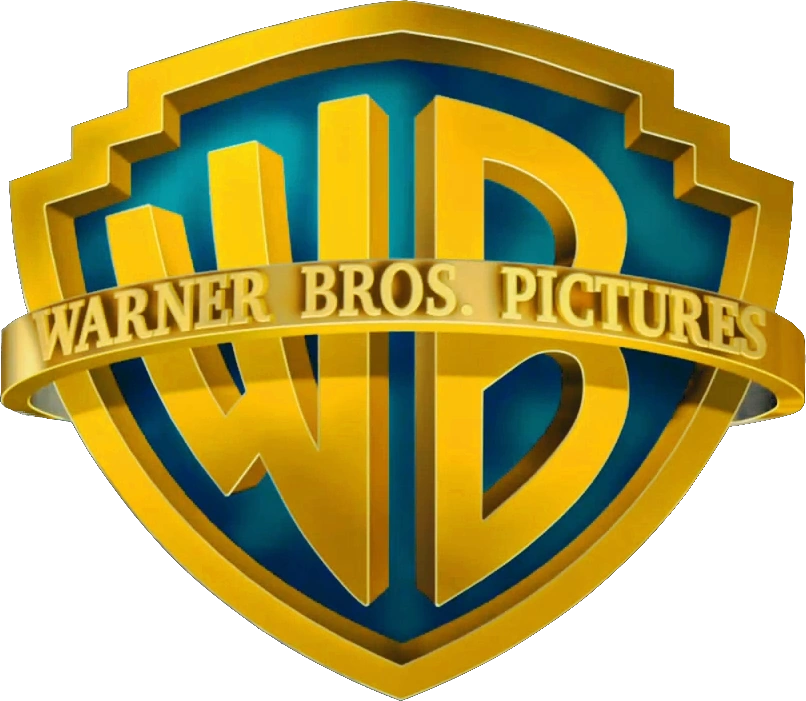
Warner Bros. Pictures
From Dirty Harry to Harry Potter and Free Willy to Willy Wonka, Warner Bros. has been one of the biggest players in the entertainment industry since its inception in 1923. Over the last 93 years, the company has undergone a number of changes in staff, ownership, and production. They’ve expanded from a small film company to a multibillion dollar icon under the Time Warner Center umbrella. Growing up, the WB logo was one of the most easily recognizable symbols branding the movies and cartoons I knew and loved. I chose this logo simply for the nostalgia it represents to me, even though it is still very much a prominent company.
The logo has undergone many variations over the years perhaps, most notably, in Saul Bass’s 1972 iteration. The most obvious consistency over time is the use of a shield branded with the Warner Bros. acronym, “WB.” The imagery of a crested shield suggests power and quality, alluding to the projected strength of their productions. The choice of a bold typeface further promotes strength. The letters tend to fill the full shield, forcing them to be larger toward the middle of the frame. The suggests growth and expansion while the choice of gold again alludes to quality and a name you can trust.

Although there are repeated shapes and colors, I think the logos greatest strength is its fluidity. As a brand persists through time it will be witness to changes in cultural and social norms. Warner Brothers allowed the logo to adapt and while still maintaining the memorable framework of the large branded initials. They incorporated their logo into the films themselves by giving individual filmmakers the freedom to stylize the logo to suit their project.

DC Comics
DC Comics is another subsidiary of the Time Warner Center empire. I love the brand, I’m behind the product but in this case, I kind of hate the logo. DC has also undergone a number of branding changes during the 82 years since its start. While each iteration varies slightly, the general theme is a bold-fonted sans serif “DC” centered within the boundaries of a circle with no background.

The first logos relied heavily on product-association feature their pride and joy, Superman. he most notable alteration, in 1970, features a the caped crusader mid-flight against a black background. Generally, color schemes can tell a lot about the type of message a company is trying to confer. In this case the fluctuation between red, blue, or both seems to be representative of their iconic hero’s signature colors. I like this technique as a way to associate the perhaps less known DC name with the near universal brand of Superhero. Circles generally suggest softness and familiarity. They are considered to be “feminine” compared to their more pointy geometric cousins and are thought to evoke comfort. The light and undersaturated blue creates a similar ambience. This all seems like an odd choice for a battle-filled comic book. Compared the the stark, bold, and sharped edged logo of their major competitor, Marvel, the DC logo in its pale blue circle seems to have already given up. The general blocky-ness of the typeface (in particular, in its most recent form) confuses me. I cannot fathom why they chose 2016’s font.
I appreciate the clever design of 2012’s logo. The D and C are combined into one shape with the former being peeled over the latter, like the pages of a comic book but again, the color choice doesn’t seem synonymous with the brand. 2005’s logo choice makes new use of the circle. My guess is that they were attempting to turn it into something evocative of Captain America’s shield being slung through the air. However, the color and gentle curvature in the typeface makes me think of a laundry detergent company.

Penguin Books
The British publishing house, established in 1935, is home to one of my favorite logos and many of my favorite books. I think the logo itself is quite effective in branding the company while their application of the logo in marketing and publishing is extremely consistent and highly identifiable.
The logo makes use of simplicity that was rare in the publishing houses of the time that often portrayed elaborate illustrates and marketing. The clearly illustrated penguin itself was an effective logo, easily standing out amongst the competition. The color orange, in marketing, is thought to evoke a sense of curiosity and adventure while also generating excitement. This is another great technique to draw a gazing eye toward your brand on a shelf cluttered with hundreds of other publications. The gentle curves of the outline suggest calm and order, in line with the ambience sought after while reading. Additionally, the shape of the border (an oval with slightly thicker sides) seems to be a capital letter “O” similar to the enlarged O’s beginning the Once upon a time’s of fairy tales.
One of the biggest challenges in marketing books is getting your product to stand out in on a shelf or in a bookstore. Penguin created a systematic and consistent identity using color. All book spines followed the same guidelines and were color-coded to ease the user experience (orange for general fiction, green for crime, etc.)

Readers browsing a shelf could easily identify the publishing house and filter for the types of books they were looking for. The consistency of the three-striped covers makes them easily identifiable.

I have no particular reason to prefer this publishing house to others, yet when browsing a bookstore their spines always catch my eye, dotting the selves with their orange stripes. I find their strategy to be very effective and, aesthetically, I appreciate the simplicity.